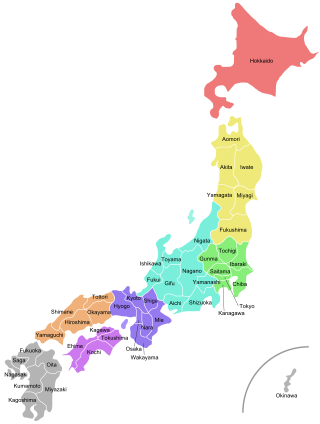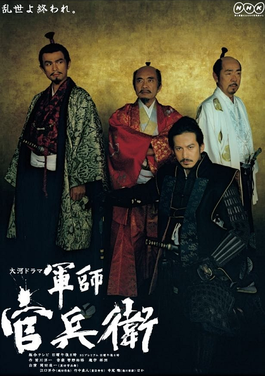This article relies largely or entirely on a single source .(September 2019) |
| ||||||||||||||||||||||||||||||||||
| Turnout | 79.80 | |||||||||||||||||||||||||||||||||
|---|---|---|---|---|---|---|---|---|---|---|---|---|---|---|---|---|---|---|---|---|---|---|---|---|---|---|---|---|---|---|---|---|---|---|
| ||||||||||||||||||||||||||||||||||
| ||||||||||||||||||||||||||||||||||
A gubernatorial election was held on 17 April 1963 to elect the Governor of Hokkaido Prefecture.
This article relies largely or entirely on a single source .(September 2019) |
| ||||||||||||||||||||||||||||||||||
| Turnout | 79.80 | |||||||||||||||||||||||||||||||||
|---|---|---|---|---|---|---|---|---|---|---|---|---|---|---|---|---|---|---|---|---|---|---|---|---|---|---|---|---|---|---|---|---|---|---|
| ||||||||||||||||||||||||||||||||||
| ||||||||||||||||||||||||||||||||||
A gubernatorial election was held on 17 April 1963 to elect the Governor of Hokkaido Prefecture.
| Party | Candidate | Votes | % | ±% | |
|---|---|---|---|---|---|
| Liberal Democratic | Kingo Machimura * | 1,393,352 | |||
| Social Democratic | Tetsuo Ara | 753,480 | |||
| Communist | Jin Nishidate | 34,064 | |||
| Independent | Issui Maekawa | 12,178 | |||
| Turnout | 2,244,227 | 79.80 | |||

Hokkaido is Japan's second largest island and comprises the largest and northernmost prefecture, making up its own region. The Tsugaru Strait separates Hokkaidō from Honshu; the two islands are connected by the undersea railway Seikan Tunnel.

Aomori Prefecture ([a̠o̞mo̞ɾʲikẽ̞ɴ]) is a prefecture of Japan in the Tōhoku region. The prefecture's capital, largest city, and namesake is the city of Aomori. Aomori is the northernmost prefecture on Japan's main island, Honshu, and is bordered by the Pacific Ocean to the east, Iwate Prefecture to the southeast, Akita Prefecture to the southwest, the Sea of Japan to the west, and Hokkaido across the Tsugaru Strait to the north. Aomori Prefecture is the 8th-largest prefecture, with an area of 9,645.64 km2 (3,724.20 sq mi), and the 31st-most populous prefecture, with more than 1.18 million people. Approximately 45 percent of Aomori Prefecture's residents live in its two core cities, Aomori and Hachinohe, which lie on coastal plains. The majority of the prefecture is covered in forested mountain ranges, with population centers occupying valleys and plains. Aomori is the third-most populous prefecture in the Tōhoku region, after Miyagi Prefecture and Fukushima Prefecture. Mount Iwaki, an active stratovolcano, is the prefecture's highest point, at almost 1,624.7 m (5,330 ft).

Japan is divided into 47 prefectures, which rank immediately below the national government and form the country's first level of jurisdiction and administrative division. They include 43 prefectures proper, two urban prefectures, one regional prefecture and one metropolis. In 1868, the Meiji Fuhanken sanchisei administration created the first prefectures to replace the urban and rural administrators in the parts of the country previously controlled directly by the shogunate and a few territories of rebels/shogunate loyalists who had not submitted to the new government such as Aizu/Wakamatsu. In 1871, all remaining feudal domains (han) were also transformed into prefectures, so that prefectures subdivided the whole country. In several waves of territorial consolidation, today's 47 prefectures were formed by the turn of the century. In many instances, these are contiguous with the ancient ritsuryō provinces of Japan.
Events in the year 2010 in Japan.
A gubernatorial election was held on 10 April 2011 to elect the Governor of Hokkaido Prefecture.

A gubernatorial election was held on 8 April 2007 to elect the Governor of Hokkaido Prefecture.

Gunshi Kanbei is a 2014 Japanese historical drama television series and the 53rd NHK taiga drama. The series was broadcast from January 5 to December 21, 2014, and ran a total of 50 episodes. The drama depicts the life of Kuroda Kanbei, a retainer of daimyō Kodera Masamoto of Harima Province, and a strategist for daimyō Toyotomi Hideyoshi.
Events in the year 1976 in Japan. It corresponds to Shōwa 51 (昭和51年) in the Japanese calendar.
A gubernatorial election was held on 5 April 1947 and 16 April 1947 to elect the Governor of Hokkaido Prefecture. Toshibumi Tanaka defeated Eiji Arima after a six-candidate primary to become the prefecture's first democratically elected governor.
A gubernatorial election was held on 30 April 1951 to elect the Governor of Hokkaido Prefecture.
A gubernatorial election was held on 23 April 1955 to elect the Governor of Hokkaido Prefecture.
A gubernatorial election was held on 23 April 1959 to elect the Governor of Hokkaido Prefecture.
A gubernatorial election was held on 13 April 2003 to elect the Governor of Hokkaido Prefecture.
A gubernatorial election was held on 12 April 1987 to elect the Governor of Hokkaido Prefecture.
A gubernatorial election was held on 8 April 1979 to elect the Governor of Hokkaido Prefecture.
A gubernatorial election was held on 13 April 1975 to elect the Governor of Hokkaido Prefecture.
A gubernatorial election was held on 11 April 1971 to elect the Governor of Hokkaido Prefecture.
A gubernatorial election was held on 15 April 1967 to elect the Governor of Hokkaido Prefecture.